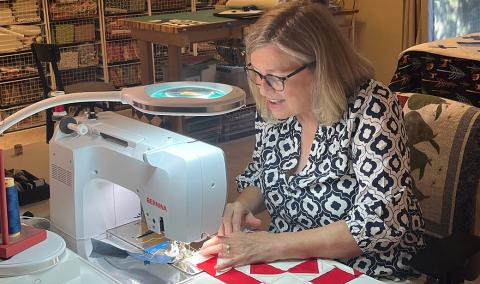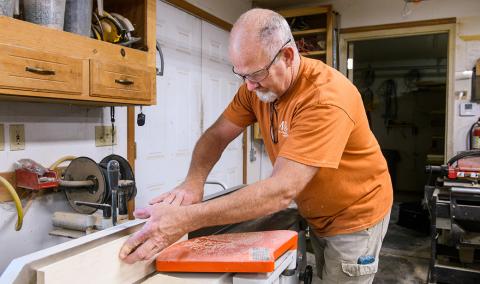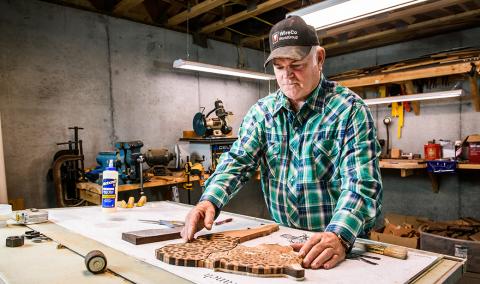On each side of the pelvis (hip) bone is the acetabulum, or socket, of the ball-and-socket joint. The surface of the acetabulum is the only part of the pelvis replaced in either hip replacement.
The labrum is a ring of fibrocartilage that circles the rim of the acetabulum, deepening the socket. It adds strength to the joint, but limits the range of motion.

The femur, or thigh bone, is the longest bone in the body. The femoral head is the ball in the ball-and-socket joint, and fits into the acetabulum. It sits on top of the femoral neck. At the base of the neck is the greater trochanter which marks the widest point of the hip area in the skeleton.
Cartilage is a tough, elastic, gel-like layer that lines the hip joint. It is the natural bearing surface in all joints. Cartilage absorbs the shock of impact and walking, and reduces the friction in the joint to allow smooth, pain-free movement. Once injured, cartilage does not heal in adults. With enough injury, progressive deterioration can result in a worn out (arthritic) joint.
Synovial fluid is a transparent fluid that lubricates joints such as the hip, much like grease in mechanical, non-living joints.
Before performing your surgery, we will take an X-ray with a special marker on it. This helps us to plan both the size and position of implants that will be used in your surgery.
During hip replacement surgery, your surgeon removes the upper part of your thigh bone, including the femoral head (ball of the hip joint) and a part of the femoral neck (upper part of the thigh bone). This allows your surgeon to access the hip joint and perform the surgery. Damaged cartilage in the hip socket and some of the bone above are removed to allow a metal hip socket (acetabular) component to be placed into your pelvis bone. The upper part of the thigh bone is then exposed, and a series of tools called broaches are introduced one at a time to prepare your thigh bone for a metal stem that is inserted into your thigh bone.



























